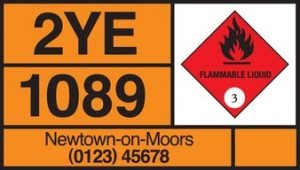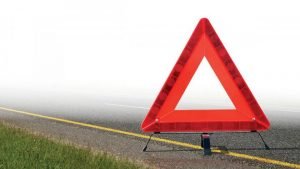Practice Test – 5 A
Quiz Summary
0 of 50 Questions completed
Questions:
Information
You have already completed the quiz before. Hence you can not start it again.
Quiz is loading…
You must sign in or sign up to start the quiz.
You must first complete the following:
Results
Results
0 of 50 Questions answered correctly
Your time:
Time has elapsed
You have reached 0 of 0 point(s), (0)
Earned Point(s): 0 of 0, (0)
0 Essay(s) Pending (Possible Point(s): 0)
Categories
- Not categorized 0%
- 1
- 2
- 3
- 4
- 5
- 6
- 7
- 8
- 9
- 10
- 11
- 12
- 13
- 14
- 15
- 16
- 17
- 18
- 19
- 20
- 21
- 22
- 23
- 24
- 25
- 26
- 27
- 28
- 29
- 30
- 31
- 32
- 33
- 34
- 35
- 36
- 37
- 38
- 39
- 40
- 41
- 42
- 43
- 44
- 45
- 46
- 47
- 48
- 49
- 50
- Current
- Review
- Answered
- Correct
- Incorrect
-
Question 1 of 50
1. Question
You see a car on the hard shoulder of a motorway with a ‘help’ pennant displayed. What does this mean? Mark one answer
CorrectIncorrect -
Question 2 of 50
2. Question
When should you use hazard warning lights? Mark one answer
CorrectIncorrect -
Question 3 of 50
3. Question
When are you allowed to use hazard warning lights? Mark one answer
CorrectIncorrect -
Question 4 of 50
4. Question
You are going through a congested tunnel and have to stop. What should you do? Mark one answer
CorrectIncorrect -
Question 5 of 50
5. Question
On a motorway, when should the hard shoulder be used? Mark one answer
CorrectIncorrect -
Question 6 of 50
6. Question
You arrive at the scene of a crash where someone is bleeding heavily from a wound in their arm. Nothing is embedded in the wound. What could you do to help? Mark one answer
CorrectIncorrect -
Question 7 of 50
7. Question
You are at an incident. What could you do to help a casualty who’s unconscious? Mark one answer
CorrectIncorrect -
Question 8 of 50
8. Question
Following a collision, someone has suffered a burn. The burn needs to be cooled. What’s the shortest time it should be cooled for? Mark one answer
CorrectIncorrect -
Question 9 of 50
9. Question
A casualty isn’t breathing normally and needs CPR. At what rate should you press down and release on the centre of their chest?
CorrectIncorrect -
Question 10 of 50
10. Question
A person has been injured. They may be suffering from shock. What are the warning signs to look for?
CorrectIncorrect -
Question 11 of 50
11. Question
An injured person has been placed in the recovery position. They’re unconscious but breathing normally. What else should be done? Mark one answer
CorrectIncorrect -
Question 12 of 50
12. Question
An injured motorcyclist is lying unconscious in the road. The traffic has stopped and there’s no further danger. What should you do to help? Mark one answer
CorrectIncorrect -
Question 13 of 50
13. Question
What should you do if you see a large box fall from a lorry onto the motorway? Mark one answer
CorrectIncorrect -
Question 14 of 50
14. Question
You are going through a long tunnel. What will warn you of congestion or an incident ahead? Mark one answer.
CorrectIncorrect -
Question 15 of 50
15. Question
An adult casualty isn’t breathing. To maintain circulation, CPR should be given. What’s the correct depth to press down on their chest? Mark one answer
CorrectIncorrect -
Question 16 of 50
16. Question
You are the first to arrive at the scene of a crash. What should you do? Mark one answer
CorrectIncorrect -
Question 17 of 50
17. Question
You are the first person to arrive at an incident where people are badly injured. You’ve switched on your hazard warning lights and checked all engines are stopped. What else should you do? Mark one answer
CorrectIncorrect -
Question 18 of 50
18. Question
You arrive at the scene of a motorcycle crash. The rider is injured. When should their helmet be removed? Mark one answer
CorrectIncorrect -
Question 19 of 50
19. Question
You arrive at an incident. There’s no danger from fire or further collisions. What’s your first priority when attending to an unconscious motorcyclist? Mark one answer
CorrectIncorrect -
Question 20 of 50
20. Question
At an incident, someone is unconscious. What would your priority be? Mark one answer
CorrectIncorrect -
Question 21 of 50
21. Question
You have stopped at an incident to give help. What should you do? Mark one answer
CorrectIncorrect -
Question 22 of 50
22. Question
There is been a collision. A driver is suffering from shock. What should you do? Mark one answer
CorrectIncorrect -
Question 23 of 50
23. Question
You arrive at the scene of a motorcycle crash. No other vehicle is involved. The rider is unconscious and lying in the middle of the road. What’s the first thing you should do at the scene? Mark one answer
CorrectIncorrect -
Question 24 of 50
24. Question
At an incident, a small child isn’t breathing. What should you do to try and help? Mark one answer
CorrectIncorrect -
Question 25 of 50
25. Question
At an incident, a casualty isn’t breathing. What should you do while helping them to start breathing again?
CorrectIncorrect -
Question 26 of 50
26. Question
At an incident, someone is suffering from severe burns. What should you do to help them? Mark one answer
CorrectIncorrect -
Question 27 of 50
27. Question
You arrive at an incident. A pedestrian is bleeding heavily from a leg wound. The leg isn’t broken and there’s nothing in the wound. How could you help? Mark one answer
CorrectIncorrect -
Question 28 of 50
28. Question
At an incident, a casualty is unconscious but breathing. When should you move them? Mark one answer
CorrectIncorrect -
Question 29 of 50
29. Question
At an incident, it’s important to look after any casualties. What should you do with them when the area is safe?
CorrectIncorrect -
Question 30 of 50
30. Question
A tanker is involved in a collision. Which sign shows that it’s carrying dangerous goods?



 CorrectIncorrect
CorrectIncorrect -
Question 31 of 50
31. Question
You are involved in a collision. Afterwards, which document may the police ask you to produce? Mark one answer
CorrectIncorrect -
Question 32 of 50
32. Question
After a collision, someone is unconscious in their vehicle. When should you call the emergency services? Mark one answer
CorrectIncorrect -
Question 33 of 50
33. Question
A collision has just happened. An injured person is lying in a busy road. What’s the first thing you should do to help? Mark one answer
CorrectIncorrect -
Question 34 of 50
34. Question
At an incident, what should you do with a casualty who has stopped breathing? Mark one answer
CorrectIncorrect -
Question 35 of 50
35. Question
You are at the scene of an incident. Someone is suffering from shock. How should you treat them?
CorrectIncorrect -
Question 36 of 50
36. Question
There is been a collision. A motorcyclist is lying injured and unconscious. Unless it’s essential, why should you not usually attempt to remove their helmet? Mark one answer
CorrectIncorrect -
Question 37 of 50
37. Question
You have broken down on a two-way road. You have a warning triangle. At least how far from your vehicle should you place the warning triangle? Mark one answer
 CorrectIncorrect
CorrectIncorrect -
Question 38 of 50
38. Question
You break down on a level crossing. The lights have not yet begun to flash. What’s the first thing you should do? Mark one answer
CorrectIncorrect -
Question 39 of 50
39. Question
Your tyre bursts while you’re driving. What should you do? Mark one answer
CorrectIncorrect -
Question 40 of 50
40. Question
Your vehicle has a puncture on a motorway. What should you do? Mark one answer
CorrectIncorrect -
Question 41 of 50
41. Question
You have stalled in the middle of a level crossing and can’t restart the engine. The warning bells start to ring. What should you do? Mark one answer
CorrectIncorrect -
Question 42 of 50
42. Question
You are driving on a motorway. When can you use hazard warning lights? Mark one answer
CorrectIncorrect -
Question 43 of 50
43. Question
You have broken down on a motorway. When you use the emergency telephone, what will you be asked for? Mark one answer
CorrectIncorrect -
Question 44 of 50
44. Question
Before driving through a tunnel, what should you do? Mark one answer
CorrectIncorrect -
Question 45 of 50
45. Question
You are driving through a tunnel and the traffic is flowing normally. What should you do? Mark one answer
CorrectIncorrect -
Question 46 of 50
46. Question
What safeguard could you take against fire risk to your vehicle? Mark one answer
CorrectIncorrect -
Question 47 of 50
47. Question
You are on the motorway. Luggage falls from your vehicle. What should you do? Mark one answer
CorrectIncorrect -
Question 48 of 50
48. Question
While you are driving, a warning light on your vehicle’s instrument panel comes on. What should You do? Mark one answer
CorrectIncorrect -
Question 49 of 50
49. Question
Your vehicle breaks down in a tunnel. What should you do? Mark one answer
CorrectIncorrect -
Question 50 of 50
50. Question
Your vehicle catches fire while driving through a tunnel. It’s still driveable. What should you do?
CorrectIncorrect
